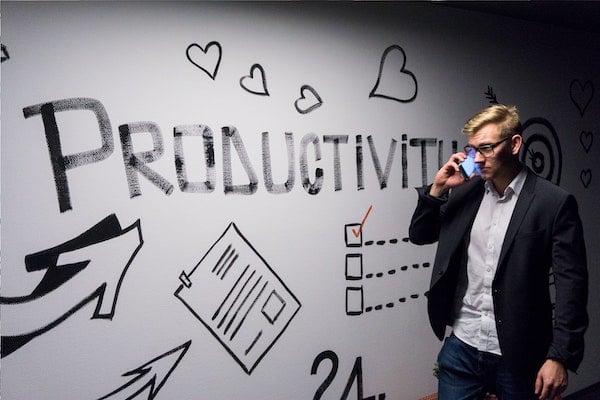Published on
Preparing for the Future (and Present!) of Work
Sheneui Weber | Vice Chancellor of Workforce and Economic Development, California Community Colleges

Talk about the future of work is starting to come up more frequently in everyday conversations. Its changing nature is happening because of a convergence of many technologies, including:
- Artificial Intelligence (think Alexa, chatbots, self-driving cars)
- Internet of Things (turning on lights using your smart phone)
- Cloud Computing (ability to access your files anywhere using any device)
- Cybersecurity (stopping hackers and protecting your digital privacy)
- Machine Learning (world computer chess champion)
- Data Science (the use of AI and machine learning that allows Amazon to show you products you might be interested in buying)
We are already seeing the impact of these technologies on our daily lives in how we shop (increasingly online), get around (using ride shares) and in the rise of the gig economy (Lyft and Uber drivers, Doordash and Grubhub delivery workers).
As vice chancellor of workforce and economic development for the California Community Colleges Chancellor’s Office — representing a system of 115 colleges serving over two million students — I think a lot about what it will take to prepare our students to be work ready.
We have to ensure that our colleges are cutting edge in serving emerging and existent labor market gaps. Additionally, we need to provide our students the opportunity to not only engage and thrive in the new digital economy, but also to have a hand in designing the tech within it.
The problem we are trying to solve is economic and social mobility and it is the same problem that the state of California and many research and private foundations are focused on.
Future of Teaching and Learning
For the California Community Colleges, the future of work is about the future of teaching and learning. The evolving nature of work means teaching and learning institutions must consider how to incorporate new approaches and learning technologies into their teachings, recognizing that we live in a highly connected world where information is very readily available on the web.
The educator’s role will need to evolve into that of facilitator and learning coach. It will also require educators become comfortable with not being experts on the subject matter at hand. The learning will need to shift, placing emphasis on the ability to properly identify, analyze, and synthesize problem statements in order to effectively solve them. This change means experiential and peer learning will also become more central in the learning process.
A few years ago, our system defined its vision for success. This was a call to action for our colleges to design a student-centric approach and to serve businesses by listening to the customer’s voice and designing to their needs. In continuing this transformational work, we must recognize the need to create a system that supports lifelong learning. In this model, education must be based in skills and competency and there must be transparency and common terminology used in credentials.
To do that, we must question everything and challenge our long-held assumptions. We must become a system that is much more responsive, nimble, and innovative. We must also become a system that provides a clear and compelling value to the students and to the companies that employ them.
As the largest higher education system in the country, our colleges are about access, equity, opportunity and value. California’s community colleges provide places through which the path to the American dream is still affordable and reachable, which makes our imperative even greater.
Employer Engagement
At the core of workforce development is employer engagement — how we partner with industries, and how we work together to close the skills and job gaps.
Our present challenge is evolving our employer engagement model in order to transform and scale experiential learning at our colleges. Experiential or work-based learning is about putting theory into practice, which makes a better worker.
In looking for the biggest impacts we can make with our investments, we are working to strengthen our regional and industry sector models. To take the regional model and sector strategies to the next level, we are focusing on cross-sector work because everything is interconnected. As the fifth-largest economy in the world, California’s global interconnectedness is undisputed.
Information & computer technologies, global trade, and business & entrepreneurship (three of our priority sectors) cut across all sectors. You can find advanced manufacturing in other sectors: health, biotech, advanced transportation and more. Advanced transportation and logistics are critical in almost every industry sector today. We can no longer maintain sector silos.
Our colleges are focused on educating and training students to address the high-demand, high-wages jobs needed by industries. In the healthcare sector, our colleges are able to train students for jobs like lab technicians, QC technicians and clinical research coordinators. But what about those jobs that pay minimum wage or slightly above minimum wage, like home health and personal are ides? What can be done? How can AI tools be used to assist in increasing skills for the gig workers? We are collaborating with other state agencies and institutions to find solutions for the economic mobility of that growing workforce sector.
One approach we are looking at s is to focus on building cross-sector career pathways for these individuals.
In the hospitality industry, for example, many workers have training in food handling and safety. How do we work across sectors to examine and develop career pathways and programs to help these workers move into food-related careers in other sectors? Can someone in the hospitality industry becoming a food lab technician or work in food manufacturing? What additional training do they need? What barriers do we need to overcome?
Another area of exploration is the idea of commoditizing skills. How do we place a dollar figure on a skill so that workers can get raises when they learn new ones?
It works in the employment or temp industry. A temp office worker who know Microsoft Word get paid a certain amount per hour, but if they also know Microsoft Excel and can effectively use it, their hourly wage is likely to go up by $4 to $5. For workers in the gig economy, attaining progressive skills may be a way to increase earnings.
There are certainly unintended consequences or disadvantages to this approach, but we need creative solutions to solve the problem of economic mobility. As an education system, we have to be part of the solution. We are committed to partnering with industries to transform skill levels to help increase workers’ value in the marketplace. An example of our work is our partnership with Amazon Web Services to scale cloud computing programs across the state at our colleges to get ahead of the growing demand.
The Entrepreneurial Mindset
I take many lessons from my work building local and regional entrepreneurial ecosystems. We know we cannot do it alone, and we must design with the student (our customer) in mind. “Nobody goes to school for fun,” I like to say. Almost everyone wants a job at the end of their education journey. I know I did.
How do we teach our students to fully embrace the entrepreneurial mindset? After all, this helps them become better future employees, leaders and business owners. The entrepreneurial mindset is about problem solving, planning, teamwork/collaboration, communications and project management, among many other skills. It’s not just about how to start a business. These are all skills companies value in an employee.
There are many solutions to help train people available at our colleges, including workforce training programs, adult education, English as a Second Language programs, and employer-readiness skills. There have also been significant investments in our workforce programs over the past few years thanks to the support of legislators, our prior administration and the recognition of the importance of cradle-to-career education by Gov. Gavin Newsom.
Now, our goal is to increase the alignment and integration of our programs, encourage more interdisciplinary learning, find new ways to engage with industries and boldly experiment with technologies such as AI in workforce training.
What if we can teach home health aides and personal care aides to use AI to increase their skill level so they care for their patients at a higher level? Will that help drive up wages?
At the CCC Chancellor’s office, we are willing to experiment, to test assumptions, to learn, to fail and to learn from our failures so we can design better workforce programs for our students and deliver a quality workforce to employers.
We want to work with industry to close the job gaps, to solve the problem of economic mobility, and we are open to learning from industries and other partners who are willing to help us crack this nut.
We know what is at stake for millions of our students, who are today’s and tomorrow’s workforce, because the future of work is happening now.
Author Perspective: Administrator



